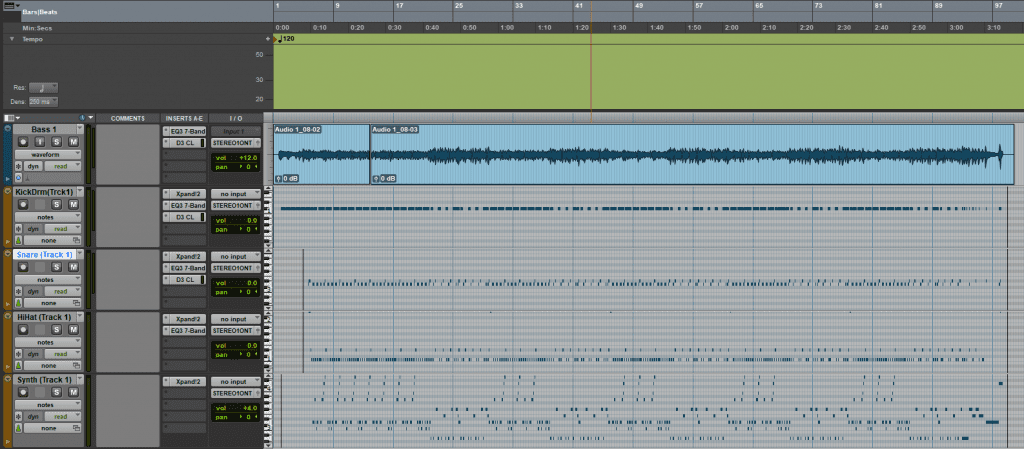
The final track was recorded at 140bpm, it has a style which was inspired by a garage rock song: Your Love is a Fine Thing by Reigning Sound. This is a rough-sounding, fast paced garage rock song, the use of the snare on the drum kit and the ‘rough’, distorted sound being the inspirations to create the last track on my EP. In regards to the sequencing, it was the usage of the drums with the kick drum and snare being used together to enhance the beats that inspired me, which I then used on every 4th bar on each verse in conjunction with the two higher pitched notes played by the bass guitar lines. I did this because I felt that it would help the track to sound heavier, thanks to the fact that the distortion on both bass guitar tracks made the song very muddy (not a lot of clarity, rather mushy, and quite perfect for a rough garage rock song) which brought the drums forward in the mix a little bit while still keeping the focus on the bass guitars. I also used a ride cymbal sound during the middle and ending sections to maintain the same rhythm as the original kick drum (a ‘4 on the floor’ pattern) while the kick drum sped up to play two sounds for every one ride cymbal sound. This was done to make the particular sections sound faster and more exciting, to make up for the fact that the bass guitars were pretty much playing one note over and over again at around the same pace, essentially trying to keep the drums and bass guitars in sync with each other to maintain the songs structure.

The velocity varies depending on the 2 different sections included in the song. The hi-hat, which has the most notes sequenced out of all of the sounds in the drum kit, has the largest variety of velocities ranging from 100% down to 50%, either being really harsh on beat or having softer off-beat hits, allowing the listener to identify the emphasis of each strike on the hi-hat. The snare also includes some variety, so most of the strikes on the snare sounded slightly quieter than others. These changes to velocity were done to give some life to the track, because, as was the case with all the previous songs, I wanted to make sure the drum kit did not sound robotic and lifeless due to a lack of variety in how loud or hard the drums were played, giving them an almost human-like quality.








